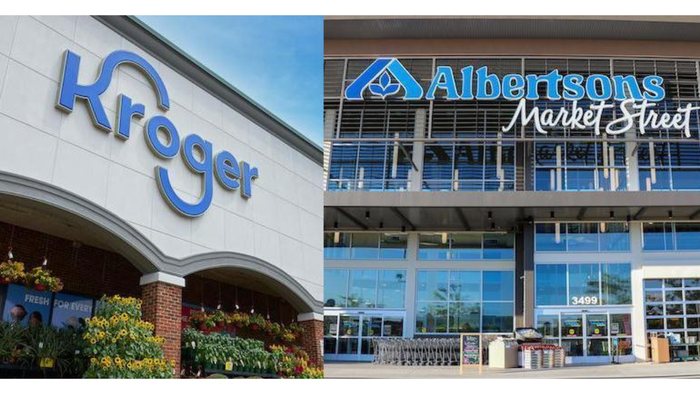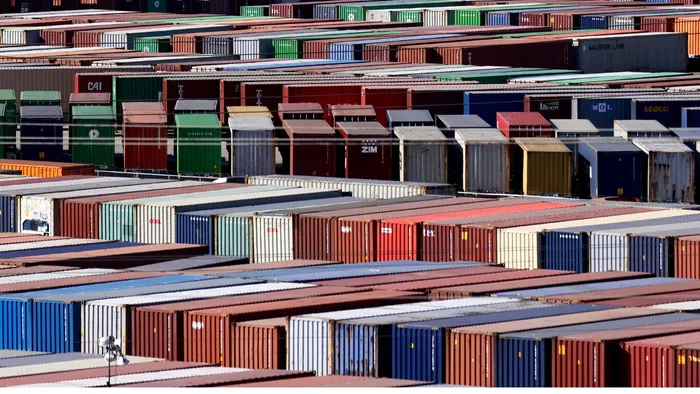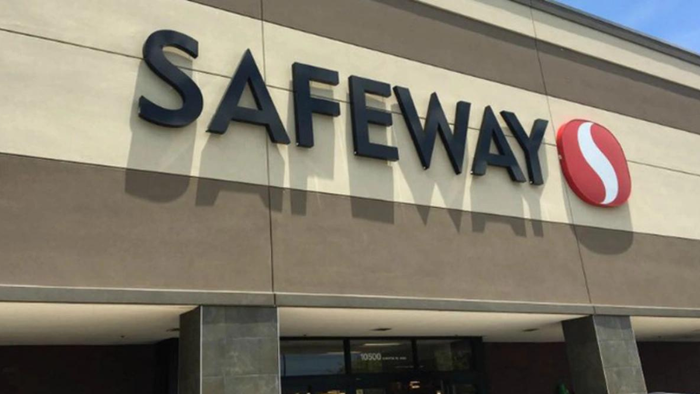Reel Education
At the International Boston Seafood Show last week, much of the advice for retailers and suppliers came back to the theme of education. Panelists argued that investment in employee education could lead to increased sales, customer loyalty and employee retention. It should remain a priority even in a challenging economy. Chuck Anderson, director of retail and new business at Sousa Seafood and former
March 28, 2011
JENNA TELESCA
At the International Boston Seafood Show last week, much of the advice for retailers and suppliers came back to the theme of education.
Panelists argued that investment in employee education could lead to increased sales, customer loyalty and employee retention. It should remain a priority even in a challenging economy.

Retailers and expert panelists emphasized the importance of consumer education efforts in seafood departments during several sessions at the International Boston Seafood Show.
Chuck Anderson, director of retail and new business at Sousa Seafood and former seafood director for Stop & Shop, recommended reserving money in the budget for education, holding seminars, and sending bulleted weekly fish facts to enforce employee quality, safety, sanitation and product knowledge. Anderson suggested selling more to current store customers, encouraging them to trade up with displays and signs, giving them appetizer ideas, and offering freezer wrapping for free.
Having a friendly face behind the counter is important, too. “I can teach somebody seafood, I can't teach them to be friendly and outgoing,” Anderson said.
Rich Castle, director of seafood for Giant Eagle, agreed that customer service is a key concern, since many customers are unfamiliar with seafood. The “customer coming into the seafood department has a different expectation of customer service. Seafood, as we all know, is very complicated,” he said, noting that shoppers are more confused in seafood departments than in other departments because of the variety of fish species, product types and other concerns.
Giant Eagle holds six to eight voluntary all-day seminars for its associates each year, usually offsite in a relaxed setting, where attendees cook seafood, listen to product knowledge speakers, and talk about business trends.
Some booths on the show's expo floor also distributed materials encouraging retailer and consumer education. Seafood Scotland, for example, handed out a consumer guide to seafood species from Scotland with buying, cooking and storage tips. The Alaska Seafood Marketing Institute told SN it provides retailers with Web-based training, as well as a spiral-bound reference guide with harvesting information, cooking tips and different fish species information. In addition to free point-of-sale information, the group launched a “Cook It Frozen” iPhone app last year with videos and recipes to help consumers learn how to cook frozen seafood.
The idea of educating customers about seafood goes hand in hand with transparency and traceability. Panelists consistently encouraged retailers to communicate honestly with customers.
If a customer walks up to the case and asks which fish came in today, he makes sure to be honest and point out the best, freshest fish so the customer goes away happy with his purchase, Anderson said during the “How to Sell Seafood in the Recession” panel. Many speakers underscored the importance of selling quality seafood.
Throughout the show, retailers encouraged one another to engage with customers regarding seafood questions and misconceptions about topics such as fishing constraints, why certain fish are in the case during certain days and not others, myths, farmed fish and sourcing information.
FROM THE SOURCE
Consumer education was also a point of conversation in the “Seafood Business Summit: Rebuilding Consumer Confidence in Gulf Seafood” panel. There, panelists involved in selling, testing and manufacturing Gulf seafood spoke about the extensive testing done on the Gulf's fish since last year's Deepwater Horizon oil spill. The seafood has been confirmed safe by federal agencies, but instilling consumer confidence has remained a challenge.
Some Gulf seafood panelists encouraged industry change to provide consumers with better answers to their concerns. Harlon Pearce, owner of Harlon's LA Fish & Seafood, and chairman of the Louisiana Seafood Promotion and Marketing Board, said this time following the oil spill is an opportunity to bring a new focus on traceability, sustainability and professionalism into the industry. The industry should know what is caught and how, he said.
Pearce encouraged further government testing to make the Gulf “the safest fishery in the world. I don't want testing to stop. We want to make sure that people understand that we're serious about what we're doing. And we don't want to go back where we were. We want to redo our fisheries and our thought process.”
Similar to the way retailers are using sourcing information to tell the stories behind the producers of produce, meat and eggs, providing shoppers with more information about seafood sourcing allows them to make informed decisions, and gives them insight on product cost.
Although there is sometimes limited seafood sourcing information available for retailers to pass on to customers, sustainability and traceability programs are expanding. For example, Gulf Wild, a new brand launched the first day of the show, March 20, tags fish and allows customers to look up information on the fishing vessel, location and fisherman on the website, mygulfwild.com.
SUSTAINABLE SOLUTIONS
Retailers and suppliers involved in implementing sustainability programs emphasized the importance of providing consumers with choices. “We want to ensure that not only our goals are served by giving our customers the best service and best product, we also support them with the tools and information they need to make better seafood choices when they're shopping with us,” said Blendle Scott, vice president of innovation and supply chain at Langley, British Columbia-based retailer Overwaitea Food Group, during the “Putting Sustainable Seafood Policies into Practice” panel.
Overwaitea gives the time-stretched, sometimes confused consumer plenty of opportunities to absorb information about its sustainability program, which partners with Sea Choice. The retailer offers shoppers pamphlets, signs, a colored seafood guide, logos and soon, an opportunity to learn about sustainability in a classroom setting. Scott noted that, on average, a consumer only spends 17 minutes in a grocery store.
Overwaitea is also going to plant seafood sustainability education seeds earlier, adding information about seafood sustainability to the several thousand school tours it offers each year.
Retailers and manufacturers are incorporating sustainability programs as a way to meet consumer demand. Safeway plans on having all fresh and frozen seafood sustainable and traceable by 2015, said Phil Gibson, group director of seafood for the Pleasanton, Calif.-based retailer. Gibson said Safeway decided to partner with FishWise, a nonprofit sustainable seafood consultancy in Santa Cruz, Calif., instead of other NGOs because FishWise is more focused on promoting business solutions than an agenda.
Education and research are at the root of Safeway's goal — Gibson said the four keys to implementing its sustainability program are an internal company resource group, a supplier outreach program, a staff training program and a customer outreach program.
Jennifer Dianto Kemmery, seafood watch director of the Monterey Bay Aquarium, summarized the six steps retailers and suppliers need to take in order to implement a sustainability program: Make a commitment, collect and assess data on product sourcing, buy responsible seafood, be transparent with customers, educate customers, and support reform in the supply chain. She said these steps were recommended by the Conservation Alliance in 2008.
RETAIL VALUES
This emphasis on education and innovation could be important to seafood departments because seafood doesn't enjoy the popularity of other proteins.
In general, not a lot of people are buying seafood, and those who do don't buy it very often, according to Perishables Group reports presented at consumer and supermarket trend seminars.
Steve Lutz, executive vice president of the Perishables Group, said that customers have stopped responding to price promotions and will be closely monitoring spending at the supermarket due to rising food inflation, increased gas prices and the lingering effects of the recession. Because of these pressures, 2011 might resemble 2008 more than 2010, with customers more concerned about costs, Lutz said.
“It's really critical to understand what drives retail success because we see a variety of outcomes at retail” that can vary by department, category and subcategory, he said. Some of those elements vital to understand are merchandising, assortment, pricing and consumer demographics to get “the right items at the right store at the right price,” Lutz said.
Because seafood is generally more expensive than other proteins, retailers will need to keep value in mind for budget conscious consumers. “How do we present the value of our products to those consumers that are out there looking to buy and put food on the table?” Lutz asked.
Although the typical seafood consumer is affluent and suburban, Lutz said that demographic factors, such as location, income and education, can impact the kinds of seafood products they buy. Salmon consumers are often affluent, suburban and highly educated. Catfish and tilapia sales skew toward middle- and lower-income consumers from urban and rural areas, although affluent customers buy those species also. Shrimp has the most diverse consumers, with affluent, urban, suburban and downscale suburban consumers, Lutz said.
There are “fundamental differences between the types of consumers that are buying these products. The question for us as suppliers and retailers is how well are we reflecting consumer preferences in the product mix we're putting in place at the retail level.”
About the Author
You May Also Like






